-
Cúrsaí

Cúrsaí
Tá roghnú cúrsa léinn ar cheann de na cinntí is tábhachtaí dá ndéanfaidh tú choíche! Féach na cúrsaí atá againn anseo agus an méid a deir mic léinn agus léachtóirí faoi na cúrsaí sin a bhfuil spéis agatsa iontu.
-
Saol na hOllscoile

Saol na hOllscoile
Chuile bhliain roghnaíonn os cionn 4,000 duine Ollscoil na Gaillimhe mar chéad rogha. Faigh amach faoin saol in Ollscoil na Gaillimhe anseo.
-
Eolas Fúinn
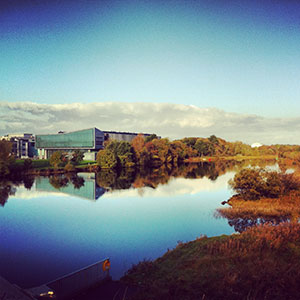
Eolas faoi Ollscoil na Gaillimhe
Bí ar an eolas faoin Ollscoil seo agus na fáthanna a bhfuil sí chomh speisialta sin – an stair thar a bheith spéisiúil a bhaineann leis an Ollscoil agus an nuacht is déanaí agus na hócáidí atá ar na bacáin.
-
Coláistí & Scoileanna
- Scoil na Tíreolaíochta, na Seandálaíochta agus Léann Éireannaigh
- Coláiste an Ghnó, an Bheartais Phoiblí & an Dlí
- Coláiste an Leighis, an Altranais & na nEolaíochtaí Sláinte
- Coláiste na hEolaíochta agus na hInnealtóireachta
- Scoil na dTeangacha, na Litríochtaí agus na gCultúr
- Roinn na Gaeilge
- An tAcadamh
- Stair
- Idirnáisiúnta
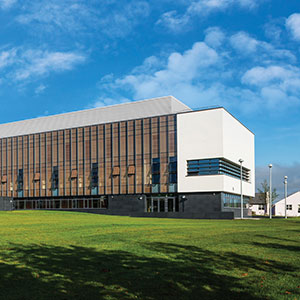
Coláistí & Scoileanna
Tá aitheantas idirnáisiúnta bainte amach ag Ollscoil na Gaillimhe mar ollscoil atá á treorú ag an taighde agus rún daingean aici teagasc den chéad scoth a chur ar fáil i réimsí éagsúla saineolais.
-
Taighde

Nithe Fónta á gCruthú as Smaointe Úra
Tugann ár dtaighdeoirí aghaidh ar chuid de na dúshláin is práinní san 21ú Céad.
-
Gnó & Tionscal
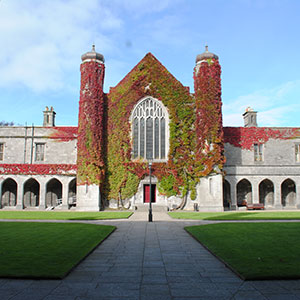
Tacaíocht do Thaighde Úrnua in Ollscoil na Gaillimhe
Déanaimid deiseanna tráchtála a chuardach agus a chothú don phobal taighde in Ollscoil na Gaillimhe, mar aon le comhpháirtíocht tionsclaíochta a chothú.
-
Alumni, Cairde & Lucht Tacaíochta
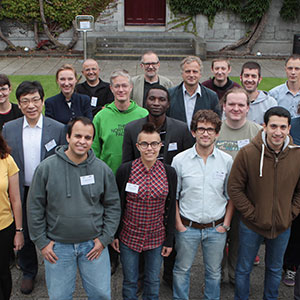
Alumni, Cairde & Lucht Tacaíochta
Tá os cionn 90,000 céimí de chuid Ollscoil na Gaillimhe ann ar fud an domhain. Déan nasc linn agus beidh teacht agat ar an gcomhphobal sin ar líne.
-
Rannpháirtíocht Pobail
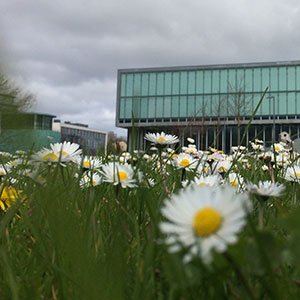
Rannpháirtíocht sa Phobal
In Ollscoil na Gaillimhe, creidimid go n-éireoidh níos fearr leat más féidir leat an méid a fhoghlaimíonn tú a chur i bhfeidhm i do shaol féin. Is mar gheall air sin go bhfuil béim mhór ar shocrúcháin oibre nó ar thionscadail phobail i gcuid mhór dár gcúrsaí.
Latest University News
17 November 2025
‘Imperfect Days’ – New Science on Screen film to premiere
Documentary explores how clinical trials are transforming diabetes care through collaboration with patients
Imperfect Days, a new Science on Screen documentary highlighting how clinical trials are transforming healthcare for people living with diabetes, will premiere at The Pálás Cinema, Galway City, on Sunday afternoon, December 7th.
Directed by David Qualter and produced by Laura Qualter of Prospect Films, Imperfect Days brings audiences into the lives of Carmel McDonagh, Tony Marshall and Faye Burke, who share their personal experiences of managing diabetes and participating in clinical trials.
The film also features leading researchers and clinicians from University of Galway, Galway University Hospitals and the Royal College of Surgeons Ireland, including Professor Fidelma Dunne, Director of the Institute for Clinical Trials at University of Galway; Professor Seamus Sreenan; Professor Matt Griffin; and Dr Christine Newman, who are at the forefront of clinical trial research and innovation in Ireland and are seeing firsthand its transformative effects.
The 25-minute documentary was produced with funding from a Health Research Board grant to the Diabetes Collaborative Clinical Trial Network, under the umbrella of Science on Screen, - a partnership between CÚRAM, the Research Ireland Centre for Medical Devices at University of Galway and Ardán, the Galway-based film and television agency.
Filmed in Dublin and Galway, Imperfect Days explores – with both sensitivity and humour – the day-to-day realities of living with diabetes. The film also shines a light on how clinical trials and public and patient involvement (PPI) are driving progress in diabetes research and care. Through pioneering trials in areas including gestational diabetes, cardiovascular disease and related chronic conditions, the Diabetes Collaborative Clinical Trial Network is advancing research that is conducted not only for patients but with them, through meaningful PPI collaboration.
David Qualter, Director, Prospect Films said: “This film is really about partnership - between researchers, clinicians, and the people who live with diabetes every day, We wanted to show how collaboration and clinical research are not abstract ideas, but real forces that are changing lives across Ireland. It was great to work with Ardán and CÚRAM on this project and an honour to be tasked with creating the 10th documentary of the fantastic Science on Screen scheme.”
Professor Fidelma Dunne, Director, Diabetes Collaborative Clinical Trial Network and Director of the Institute for Clinical Trials at University of Galway, said: “Clinical trials are the bridge between scientific discovery and real-world impact. Through the Diabetes Collaborative Clinical Trial Network, we’re ensuring that research in Ireland reflects the priorities and lived experiences of people living with diabetes. Imperfect Days highlights just how vital that partnership has become.”
Professor Abhay Pandit, founding Director of CÚRAM, said: “We’re delighted to have partnered with the Diabetes Collaborative Clinical Trial Network for this latest film. This is the 10th film produced through our Science on Screen programme, and it is another powerful and engaging example of scientific storytelling that we hope will reach a wide audience. Congratulations to the filmmakers and participants on an excellent production.”
Alan Duggan, Ardán Chief Executive, said: "For more than ten years, the collaboration between Ardán and CÚRAM through Science on Screen has played a huge part in Ardán’s goal to create opportunities for emerging filmmakers. The documentaries created not only highlighted the groundbreaking research taking place at CÚRAM, but also reminds us that behind every illness or diagnosis there is a human story to be told. Science on Screen not only makes STEM subjects more accessible to the media audience but also provides valuable insights into the extraordinary work that is shaping the future of medicine."
Ends
14 November 2025
New study shows critical role of satellites in climate adaptation
Satellite-based Earth observation provides a unique and powerful tool in tracking climate adaptation, an international study involving University of Galway researchers has shown.
A team at the University’s Ryan Institute is helping to pioneer new methods of combining data recorded from space with artificial intelligence to measure actions that help communities, ecosystems and infrastructure adjust to current and future climate impacts in the global agrifood sector.
The science behind it allows assessments of even the most remote agricultural regions in the world, where ground measurements are sparse or too challenging.
The findings feature in a European Space Agency (ESA)–led study, published this week in npj Climate and Atmospheric Science to coincide with COP30.
The researchers mapped the potential for Earth observation in supporting different targets in the framework for the Global Goal on Adaptation (GGA), a key action under the Paris Agreement from 2015, which aims to enhance resilience and reduce vulnerability to climate impacts.
Their analysis found that many of the most critical changes to climate, known as Essential Climate Variables (ECVs), can be directly used to understand and support climate adaptation action. Focusing on four key sectors – agriculture, biodiversity, extreme events and health – the study reveals how space-based data offers something no other monitoring system can provide: truly global coverage with objective and repeatable measurements spanning up to 60 years.
Professor Aaron Golden, research team leader at the University’s Ryan Institute and co-author of the study, said: “The analysis highlights the vital and unique role satellites play in supporting the Paris Agreement’s Global Goal on Adaptation. The knowledge capability of consistent, long-term observations offers policymakers tools to measure progress and identify regions at risk.”
The research team highlighted concrete applications of earth observation science across four key themes:
Agriculture: satellites monitor water productivity, irrigation efficiency, and crop migration patterns.
Biodiversity conservation: platforms like Global Mangrove Watch and Global Forest Watch provide crucial geospatial information on ecosystem extent and changes.
Extreme events: satellites characterise flood extent, drought anomalies and urban heat islands at scales impossible with ground-based stations alone.
Health sector: Earth observation data on land surface temperature and air quality inform heat exposure assessments and disease outbreak forecasting.
Dr Sarah Connors, Climate Applications Scientist at ESA, the study's lead author said: "Earth observation data should be considered as an integral part of the Global Goal on Adaptation indicators. Our research demonstrates that satellite data can inform adaptation tracking across many sectors, but it must be integrated into the indicator framework from the outset – as experience with the Sustainable Development Goals shows, it’s much harder to introduce later."
Professor Frances Fahy, Director of the University of Galway's Ryan Institute, said: "This research exemplifies the world-class, impact-driven research emerging from the Ryan Institute and our growing Geospatial Centre. By using satellite Earth observation data to better understand and track global climate adaptation, Professor Golden’s work reinforces the vital role that cutting-edge interdisciplinary research plays in addressing the climate crisis and shaping international climate policy."
Professor Golden added: "I am delighted the impact our research in quantifying climate adaptation in food production using AI and earth observation data has had in providing a direct means of linking facts on the ground, anywhere on the planet, to the Paris Agreement's Global Goal on Adaptation indicators."
The full study, published in npj Climate and Atmospheric Science, is available at https://www.nature.com/articles/s41612-025-01251-1.
Ends
12 November 2025
Ireland’s best young science filmmakers unearthed
University of Galway’s ReelLIFE SCIENCE awards for schools and youth groups in 10 counties
From AI to allergies and dopamine to the deep sea, short science videos made by young Irish filmmakers have been celebrated at the 13th Annual ReelLIFE SCIENCE Awards in University of Galway.
The event took place on Sunday November 9th as part of Science Week 2025 and the 27th Galway Science and Technology Festival.
More than 200 short science films were entered into the competition created by 1,800 young science enthusiasts in 86 schools and youth groups taking part across the island of Ireland.
Winning videos were selected by a panel of guest judges including science communicators Mark Langtry – The Science Guy; Amy Hassett, University College Dublin; and the 2025 BT Young Scientist and Technology Exhibition winners, Ciara, Saoirse and Laoise Murphy, from Presentation Secondary School, Tralee, Co Kerry.
ReelLIFE SCIENCE Winners – Primary
1st Prize – Twenty-three talented sixth class students from Gaelscoil Riabhach in Loughrea, Co Galway, along with their teacher Brian Ó Meacháin, won the €1,000 first prize for their animated video ‘An Fharraige Dhomhain’ exploring The Deep Sea.Runners-up – Inspired by an episode of Fr. Ted, teacher Thomas Egan and sixth class students from Sooey National School in Sligo explained the workings of the eye in their humorous video ‘Small or Far Away?’ Finishing third, and led by teacher Tommy Buckley, fifth class students from Killorglin National School in Kerry made a science music video entitled ‘Why do Cats Always Land on their Feet’, while teacher Clíodhna O’Donnell and 28 sixth class students from Abbey Primary School in Boyle, Co. Roscommon came fourth for their study of levers and pulleys, ‘Machine Made Possible’.
ReelLIFE SCIENCE Winners – Post-primary
1st Prize – Seven first and second year students from Coláiste Ghobnait on Inis Oírr, Co na Gaillimhe, won the €1,000 first prize under the guidance of science teacher Rebecca Ní Chríocháin, for their video ‘Céard is cúis le ailléirgí?’ explaining the causes of allergies through Irish.
Runners-up – Sixth year students Shaun Irimpan and Gabriel McCrystal from Coláiste Na Mí, Navan, Co. Meath, highlighted the negative impacts of artificial intelligence in their video ‘What Happens When Everyone Uses AI?’ The third-place prize went to Transition Year students Evanna Moneley, Jasmine Zhang and Asia Aru from Alexandra College in Dublin for their video ‘Everything we need to know about Dopamine’, while fourth prize was awarded to Saipresha Paraneetharan, Alannah McCarthy, Zara Jaiby and Lily Hutton from Tullow Community School in Carlow for their science music video ‘Why do we Hiccup?,
ReelLIFE SCIENCE Winners – Youth Organisation
1st Prize – A group of 12 young people from Athlone, Co Westmeath who took part in My Life Online workshops facilitated by Midlands Science and Foróige and supported by the Rethink Ireland TikTok Digital Future Fund, won the €1,000 youth group first prize for their video ‘Why is the Sky Blue’.
Runners-up – Brogan O’Donnell from Trident Swim Club in Carrick on Shannon, Co. Leitrim came second for his underwater video exploring ‘The Science of Swimming’. Eddie Sweeney and Brooklyn Conroy from Ballybane Foróige in Galway were third for their science experiments video ‘My life as…a Scientist’, while six young people from Ballyphehane and Greenmount Foróige group in Cork finished fourth for their video ‘The Science of Coke and Mentos’.
Special Category Awards
Carrigallen National School, Leitrim
Agricultural Science Award
Bunclody Community College, Wexford
Best Acting Award
Mount Anville Secondary School, Dublin
Best Animation Award
Gaelscoil Uileog de Búrca, Mayo
Físeán Gaeilge is fearr
Royal School Cavan
How Things Work Award
Ennis National School, Clare
Junior Scientists Award
Presentation Primary Listowel, Kerry
Teamwork Award
All of the winning videos can be viewed at https://www.youtube.com/ReelLifeScience.
The ReelLIFE SCIENCE programme challenges young people in schools and youth groups across the island of Ireland to engage with science and technology while developing their communication and digital skills, by producing short educational videos for the public.
Since being launched in 2013 by Dr Enda O’Connell and a team of scientists from University of Galway’s College of Science and Engineering, this challenge has been met by more than 30,000 young people, supported by teachers and staff in 825 schools and youth groups.
Dr O’Connell said: “Every year, we’re amazed by the imagination, creativity and curiosity shown by young people across Ireland. Through ReelLIFE SCIENCE, they bring science to life in ways that are funny, thought-provoking and inspiring, making it accessible to everyone. We’re incredibly proud of all the students, teachers and youth leaders who took part this year. A big congratulations to every one of them for sharing their passion for science with the world.”
ReelLIFE SCIENCE is supported by the Research Ireland Discover Programme, University of Galway’s College of Science and Engineering, the CÚRAM - the Research Ireland Centre for Medical Devices at University of Galway, the Cell EXPLORERS programme and Foróige.
Ends









